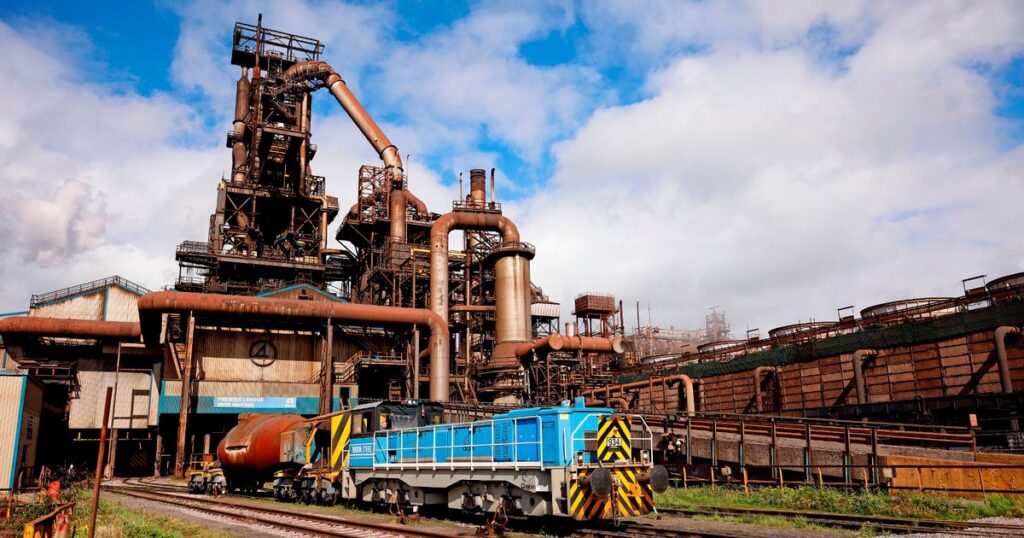The UK Government’s strategic decision to transition Port Talbot’s steelworks to an electric arc furnace marks a significant shift in steelmaking in South Wales.
This transition, set to unfold in 2024, is accompanied by substantial government funding, but also foresees the loss of 2,800 jobs, stirring both economic and emotional responses within the community.
Overview of the Transition Plan
The UK Government has announced plans to allocate £500 million for the development of an electric arc furnace at Port Talbot. This marks the end of traditional steelmaking methods, shifting towards more sustainable practices. The move is significant, as it concludes a historic era of steel production that has been central to the region’s identity for decades.
Economic and Employment Impact
The transition to electric arc furnace technology is not without its challenges, particularly concerning employment. As per the proposed plan, approximately 2,800 workers are expected to lose their jobs. This development has sparked concern among unions and local communities who rely heavily on the steelworks for economic stability.
Furthermore, beyond the immediate job losses, there are wider economic repercussions to consider. The local supply chain, dependent on the steel industry, faces potential disruptions, impacting businesses and ancillary services within the area.
Government and Union Negotiations
Negotiations between the UK Government and Tata Steel have been critical in shaping the future of Port Talbot. Despite initial criticisms by the Labour Party, the current agreement aligns closely with the prior Conservative government’s plan.
The unions are actively involved, working to negotiate the best possible terms for their members. The proposed redundancy package includes enhanced terms, a skills retraining scheme, and commitments to safeguard downstream operations.
Logistical Changes and Historical Context
Historically, Port Talbot’s steelworks have processed over 300 million tonnes of raw materials since 1970. The current changes bring about an end to an era where raw materials were shipped globally to feed the furnaces.
The final raw material delivery, captured in a poignant video, represented a bittersweet moment for the community. As Port Talbot transitions, the local landscape and industrial processes will be indelibly altered.
Logistically, the harbour and associated facilities, such as conveyor belts, will be decommissioned. This marks a transformation not only in operational methods but also in the visual and economic landscape of the region.
Community Response and Future Prospects
The response from the local community and workforce has been mixed. On one hand, there are feelings of sadness and nostalgia for the loss of a long-standing industrial icon.
Conversely, there is recognition of the necessity to evolve and adapt to modern, sustainable manufacturing methods. The promise of future investments and commitment to load downstream operations offers a glimmer of hope.
However, workforce adaptation remains a critical concern, with retraining programs seen as essential to mitigate job losses and equip workers with skills for future employment opportunities.
Political Reactions and Statements
Political figures have been vocal in their responses to the developments at Port Talbot. Shadow Welsh Secretary, Lord Davies of Gower, acknowledged Labour’s eventual acceptance of the plan, calling it pragmatic.
He emphasised the importance of swift financial aid distribution to support affected workers, highlighting the role of the previous Conservative Government in securing the steel industry’s future.
Official statements have underscored the importance of the steel sector in the national economy, with a focus on ensuring a green transition that supports job retention and economic growth.
Future of Steelmaking in South Wales
The shift to electric arc furnaces could define the future of steelmaking in South Wales. While traditional methods phase out, the potential for a more sustainable and economically viable industry emerges, albeit with substantial transitional challenges.
As Port Talbot transitions to electric arc furnace steelmaking, the region faces significant economic challenges but also potential opportunities.
The collaboration between government, industry, and workforce remains pivotal in navigating this transformation successfully.


